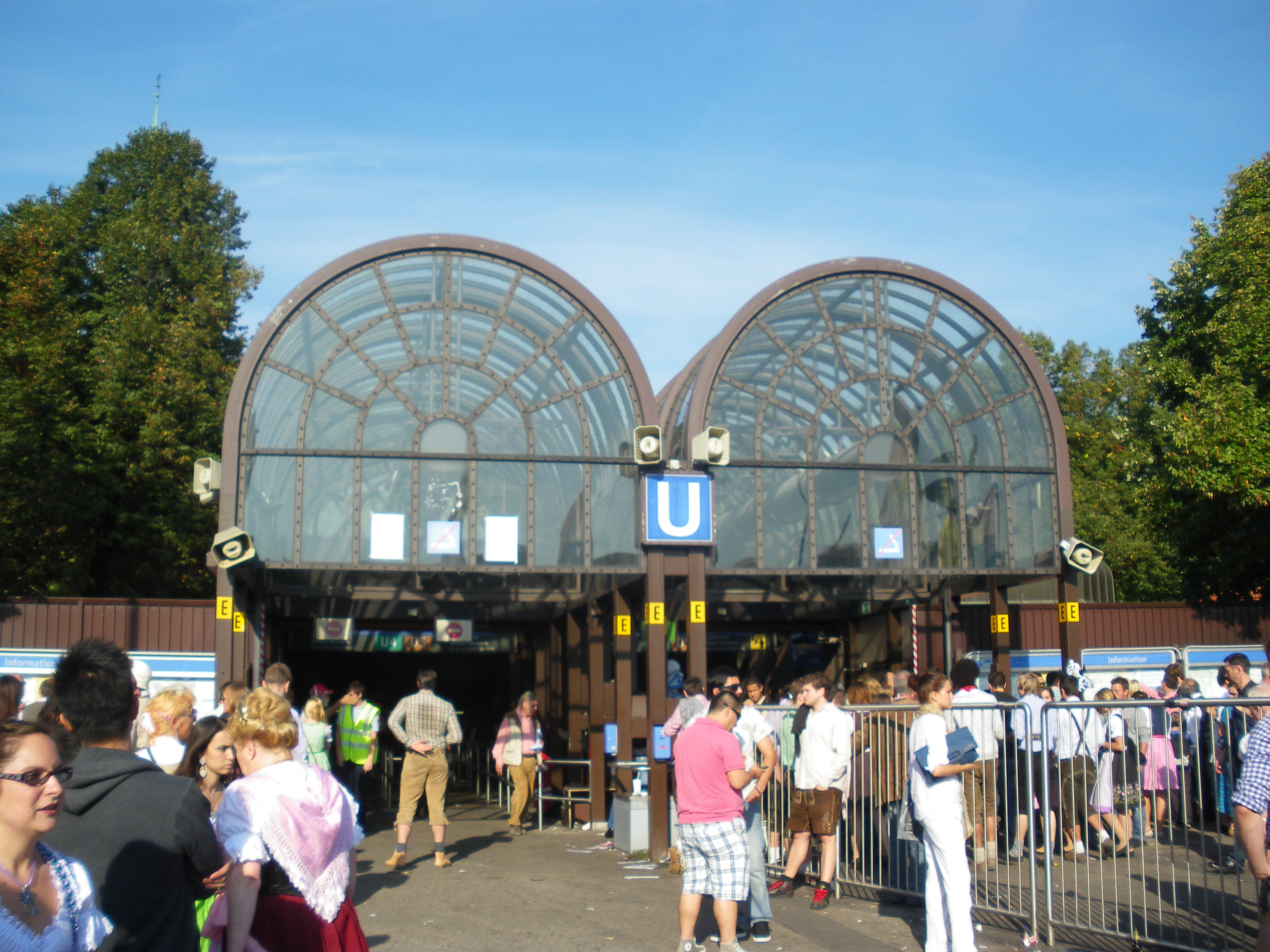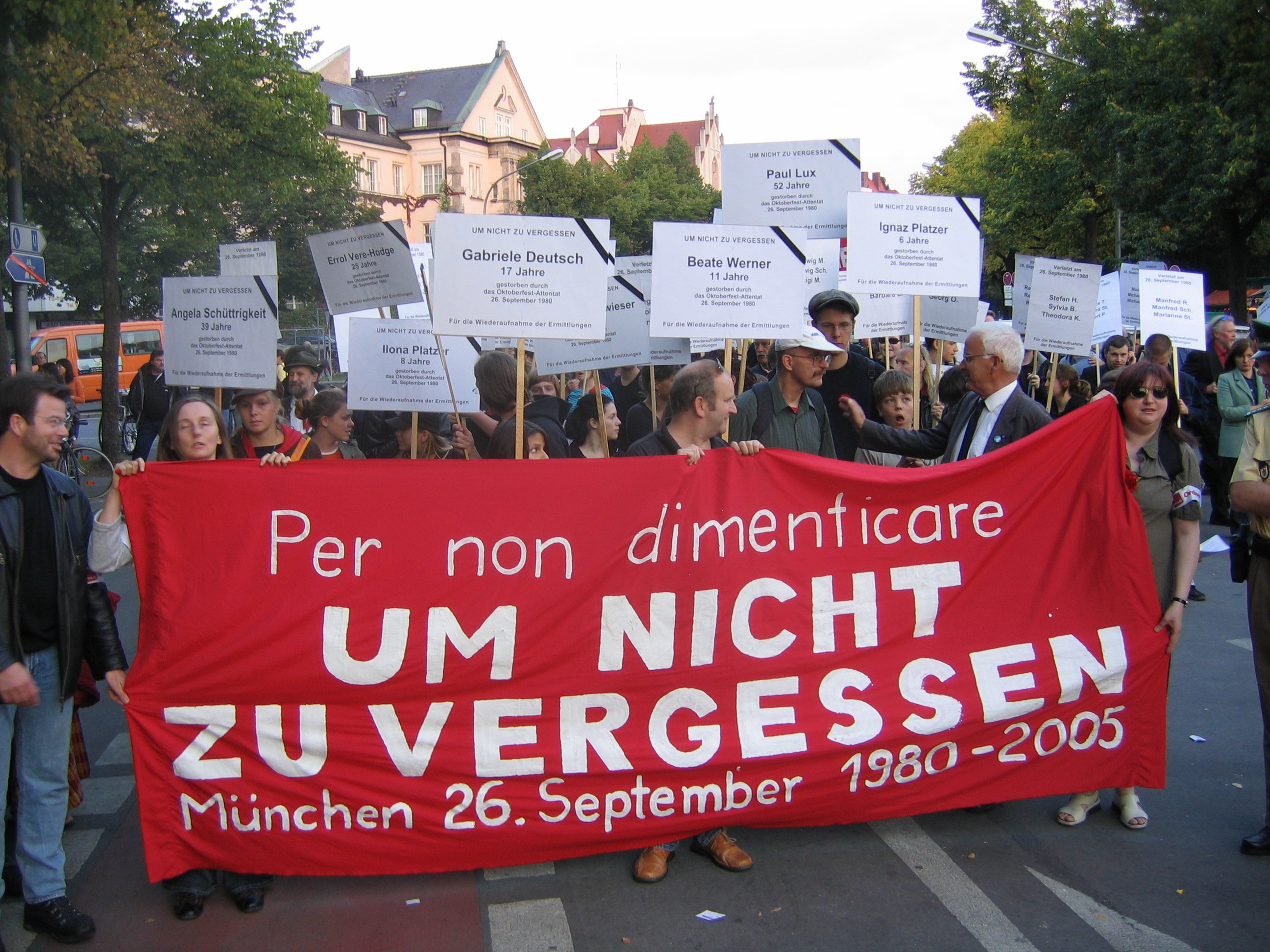|
Theresienwiese
Theresienwiese is an open space in the Munich borough of Ludwigsvorstadt-Isarvorstadt. It serves as the official ground of the Munich Oktoberfest. A space of , it is bordered in the west by the Ruhmeshalle and the Bavaria statue, symbolizing the State of Bavaria, and in the east by ''Esperantoplatz'', a square named for the international language Esperanto. There, a memorial commemorates the victims of the 1980 Oktoberfest bombing. Bavariaring, an orbital road, provides access to visiting traffic. In the north the towers of the Paulskirche are visible. History The name of the site is derived from the name of Princess Therese of Saxe-Hildburghausen, the wife of King Ludwig I of Bavaria. Their wedding when Ludwig I was still crown prince took place on a meadow outside the city walls on October 12, 1810 ("Wiese" is German for "meadow"), which thereafter was called "Theresienwiese". Since then, the Oktoberfest is celebrated every year to commemorate this event. In addit ... [...More Info...] [...Related Items...] OR: [Wikipedia] [Google] [Baidu] |
Oktoberfest
Oktoberfest (; ) is the world's largest , featuring a beer festival and a travelling carnival, and is held annually in Munich, Bavaria, from mid- or late-September to the first Sunday in October. The annual event attracts more than seven million international and national visitors at its peak. Locally, it is called , after the colloquial name for the fairgrounds, Theresienwiese. Oktoberfest is an important part of local culture, having been held since the year 1810 (with intermissions). Other cities across the world also hold Oktoberfest celebrations that are modeled after the original Munich event. During the event, large quantities of Oktoberfest Beer are consumed: in 2014, were served. Visitors also enjoy numerous attractions, such as amusement rides, side stalls, and games. There is also a wide variety of traditional foods available. Oktoberfest originally took place in the 16-day period leading up to the first Sunday in October. In 1994, this longstanding schedule was mo ... [...More Info...] [...Related Items...] OR: [Wikipedia] [Google] [Baidu] |
Munich U-Bahn
The Munich U-Bahn () is an Railway electrification system, electric rail Rapid transit, rapid transit network in Munich, Germany. The system began operation in 1971, and is operated by the municipally owned Münchner Verkehrsgesellschaft (MVG; Munich Transport Company). The network is integrated into the Münchner Verkehrs- und Tarifverbund (MVV; Munich Transport and Tariff Association) and interconnected with the Munich S-Bahn. The U-Bahn currently comprises eight lines, serving 96 stations (100 stations if four interchange stations with separate levels for different lines are counted twice), and encompassing of routes. Alongside the S-Bahn, the Munich subway is the most important means of local public transport in Munich. Since the opening of the first line on October 19, 1971, a network with 95 km of track and 96 stops has been built, to which the neighboring town of Garching near Munich is also connected and in future also the Planegg district of Martinsried (both in the dist ... [...More Info...] [...Related Items...] OR: [Wikipedia] [Google] [Baidu] |
Bavaria Statue
''Bavaria'' is the name given to a monumental, bronze sand-cast 19th-century statue in Munich, southern Germany. It is a female personification of the Bavarian homeland, and by extension its strength and glory. The statue is part of an ensemble which also includes a hall of fame (''Ruhmeshalle (Munich), Ruhmeshalle'') and a stairway. It was commissioned by Ludwig I of Bavaria, with the specific design being chosen by competition. It was cast at the Munich foundry of J.B. Stiglmair between 1844 and 1850 and is the first colossal statue since Classical Antiquity to consist entirely of cast bronze. It was and is up to the present day considered a technological masterpiece. Because of its size it had to be produced in several parts; it is 18.52 metres (60 ft. 9 in.) high and weighs about 87.36 tons. It rests on a stone base which is 8.92 (28 ft.) metres high. An internal circular staircase leads up to a platform in the head, where four openings in the helmet provide a v ... [...More Info...] [...Related Items...] OR: [Wikipedia] [Google] [Baidu] |
Theresienwiese Station
Theresienwiese is a station of Munich U-Bahn on the U4 and U5 line. It is the closest station to the Oktoberfest grounds on the Theresienwiese. During Oktoberfest, the station handles 21,000 passengers per hour each direction.MVG Linie 8 3/2006 p3 See also *List of Munich U-Bahn stations The Munich U-Bahn is a public rapid transit system serving the city of Munich and surrounding communities. The system is operated by the Münchner Verkehrsgesellschaft (MVG, "Munich Transport Company") and served over 375 million passengers per y ... References External links Munich U-Bahn stations Railway stations in Germany opened in 1984 1984 establishments in West Germany Oktoberfest {{Munich-U-Bahn-stub ... [...More Info...] [...Related Items...] OR: [Wikipedia] [Google] [Baidu] |
Ludwigsvorstadt-Isarvorstadt
Ludwigsvorstadt-Isarvorstadt (Central Bavarian: ''Ludwigsvorstod-Isarvorstod'') is one of the boroughs of Munich, Germany. It consists of the districts Ludwigsvorstadt, located south of Munich Hauptbahnhof and east of the Theresienwiese, and Isarvorstadt, which is north-west of the River Isar and southeast of Munich's Altstadt-Lehel, Old Town. The Lindwurmstraße serves as a divider for the two districts. The population is estimated to be 54,049, according to the 2015 census. Benoit Blaser (The Greens) is the borough mayor since 2020, preceded by Andreas Klose (2019-2020) and Alexander Miklosy (2002-2018) (both Pink List). The borough The Ludwigsvorstadt district encompasses the quarters of St. Paul and Ludwigsvorstadt-Kliniken, while the district of Isarvorstadt is composed of the Schlachthofviertel, Drei-Mühlen-Viertel, Am alten Südfriedhof, the Glockenbachviertel, the Gärtnerplatzviertel, and Am Deutschen Museum. St. Paul The St. Paul quarter, located immediately ... [...More Info...] [...Related Items...] OR: [Wikipedia] [Google] [Baidu] |
Tollwood Festival
The Tollwood Festival is a festival which takes place semi-annually in the Olympiapark (summer) or on the Theresienwiese (winter) in Munich. History The first Tollwood Festival was held on the southern grounds of the Olympiapark in the summer of 1988. At the first Tollwood Festival from 1–11 July 1988, appearances were made by local artists such as Konstantin Wecker and Biermösl Blosn. Starting in 1991, more international artists participated. Since 1991, in addition to the summer festival the first winter festival was held, which since 2000 takes place on the Theresienwiese. In 1999, the winter festival suffered severe damages from a winter storm at its site on Arnulfstraße in late December. Description Tollwood Festival is organized by the Tollwood GmbH. The festival takes place on approximately 30,000-meter2 ground area. It has around 900,000 visitors in summer and in winter about 600,000. Financing is covered by approximately 40% from ticket sales, 40% of the ren ... [...More Info...] [...Related Items...] OR: [Wikipedia] [Google] [Baidu] |
München Hauptbahnhof
München Hauptbahnhof or Munich Central Station is the main railway station in the city of Munich, Germany. It is one of the three stations with long-distance services in Munich, the others being Munich East station (''München Ost'') and Munich-Pasing station (''München-Pasing''). München Hauptbahnhof sees about 450,000 passengers a day, which puts it on par with other large stations in Germany, such as Hamburg Hauptbahnhof and Frankfurt (Main) Hauptbahnhof. It is classified by Deutsche Bahn as a German railway station categories, category 1 station, one of 21 in Germany and two in Munich, the other being ''München Ost''. The mainline station is a terminal station with 32 platforms. The subterranean Munich S-Bahn, S-Bahn with 2 platforms and Munich U-Bahn, U-Bahn stations with 6 platforms are through stations. The first Munich station was built about to the west in 1839. A station at the current site was opened in 1849 and it has been rebuilt numerous times, including to repl ... [...More Info...] [...Related Items...] OR: [Wikipedia] [Google] [Baidu] |
Munich
Munich is the capital and most populous city of Bavaria, Germany. As of 30 November 2024, its population was 1,604,384, making it the third-largest city in Germany after Berlin and Hamburg. Munich is the largest city in Germany that is not a state of its own. It ranks as the 11th-largest city in the European Union. The metropolitan area has around 3 million inhabitants, and the broader Munich Metropolitan Region is home to about 6.2 million people. It is the List of EU metropolitan regions by GDP#2021 ranking of top four German metropolitan regions, third largest metropolitan region by GDP in the European Union. Munich is located on the river Isar north of the Alps. It is the seat of the Upper Bavaria, Upper Bavarian administrative region. With 4,500 people per km2, Munich is Germany's most densely populated municipality. It is also the second-largest city in the Bavarian language, Bavarian dialect area after Vienna. The first record of Munich dates to 1158. The city ha ... [...More Info...] [...Related Items...] OR: [Wikipedia] [Google] [Baidu] |
Ruhmeshalle (Munich)
The Ruhmeshalle (, ) is a Doric order, Doric colonnade with a main range and two wings, designed by Leo von Klenze for Ludwig I of Bavaria. Built in 1853, it is situated on an ancient ledge above the Theresienwiese in Munich and was built as part of a complex which also includes the Bavariapark and the Bavaria statue. It is built of Kelheim limestone and is 68 metres long and 32 metres deep. With the construction and exhibition of Bust (sculpture), busts of important people from Bavaria, including Electoral Palatinate, the Palatinate, Franconia and Swabia, King Ludwig intended to create a hall of fame that honors laudable and distinguished people of his kingdom, as he did also in the Walhalla memorial for all of Germany. In 1944, a bombing raid caused several busts' destruction. Image:Bavaria 2.jpg, The Ruhmeshalle with the statue of Bavaria by Ludwig Schwanthaler File:Luftbild Bavaria 18.5m 1850 Ludwig I - Ruhmeshallte 1853 68x32m auf Theresienwiese München Bayern Germany F ... [...More Info...] [...Related Items...] OR: [Wikipedia] [Google] [Baidu] |
Therese Of Saxe-Hildburghausen
Therese Charlotte Luise of Saxony-Hildburghausen (8 July 1792 – 26 October 1854) was queen of Bavaria as the wife of King Ludwig I. Oktoberfest was created in honour of their wedding and is still celebrated annually on Theresienwiese in Munich. Therese was popular amongst the people of Bavaria, and was heavily involved in her husband's politics, as well as her own charity work. Biography Therese was a daughter of Frederick, Duke of Saxe-Altenburg, and Duchess Charlotte Georgine of Mecklenburg-Strelitz, eldest daughter of Charles II, Grand Duke of Mecklenburg-Strelitz. In 1809, she was on the list of possible brides for Napoleon, but on 12 October 1810 married the Bavarian crown prince Ludwig. Their wedding was the occasion of the first ever Oktoberfest. She became queen in 1825. During the numerous love affairs of her husband, Therese suffered but tolerated the situation. She did not refrain, however, from demonstrating her disapproval in discreet ways; in 1831, she ... [...More Info...] [...Related Items...] OR: [Wikipedia] [Google] [Baidu] |
Oktoberfest Bombing
The Oktoberfest bombing () was a far-right terrorist attack. On 26 September 1980, 13 people were killed (including the perpetrator) and more than 200 injured by the explosion of an improvised explosive device (IED) at the main entrance of the Oktoberfest festival in Munich, West Germany. The bombing was attributed to the right-wing extremist and geology student Gundolf Köhler, who was instantly killed in the attack as the bomb exploded prematurely. Prior to the bombing, Köhler had been involved with the banned neo-Nazi militia Wehrsportgruppe Hoffmann, and doubts remain as to whether he acted alone. A federal investigation concluded in 2020 that the participation of accomplices or backers in the bombing could not be proven beyond reasonable doubt, although it still could not be precluded. Excluding the perpetrators, the attack was one of the deadliest in Germany since World War II after the 2016 Berlin truck attack, and along with the 1972 Munich massacre, and the deadliest ... [...More Info...] [...Related Items...] OR: [Wikipedia] [Google] [Baidu] |








